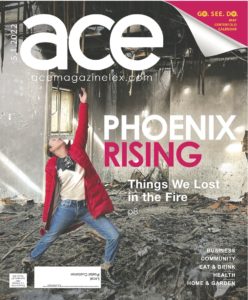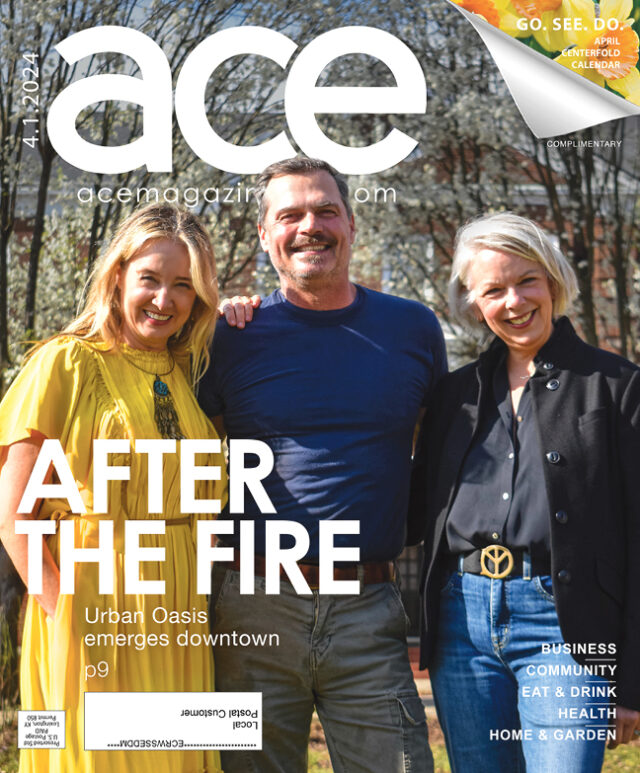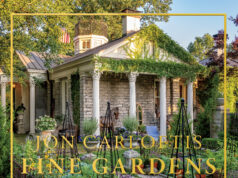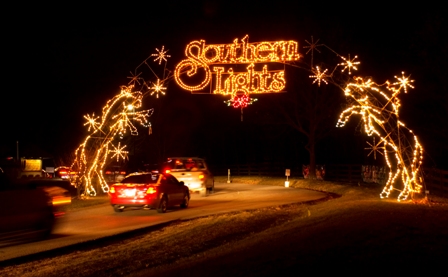Garden emerges from ashes in historic downtown Lexington neighborhood
By Kevin Nance





Sims and Poole, longtime friends and business partners, spent much of the following year pondering their next move.
They considered starting over, building a new yoga studio with offices on the site, but that proved prohibitively expensive.
(Shala recently reopened in a new rented space at 333 E. Short, another historic building that once served as a peanut and coffee roasting factory.)
With the help of award-winning Lexington garden designer and longtime friend Jon Carloftis, they investigated building a hybrid, greenhouse-like space, but the financial impact of heating and cooling it for humans and plants is unsustainable, for now.


“Stephanie said it looked terrible, and we both felt terrible about it,” Sims recalls in a recent interview at the site, which she and Poole still own. “Finally we said let’s call Jon [Carloftis] and have him make a garden or some kind of park, so people can at least see it, walk through, have a picnic, whatever.”
Now, exactly two years after the fire, that garden is taking shape as a remnant of Sims’ and Poole’s original vision of a place of serenity and healing. Although it remains very much a work in progress — an expanse of young Kentucky ryegrass surrounded by a perimeter of saplings — the garden has the outlines of a small urban oasis in the making.


The garden also includes medicinal plants such as witch hazel and mountain mist. “Stephanie and I have always envisioned this as a healing space,” Sims explains. “We spent a lot of time talking about how we thought this could work, and that it still needs to be a healing space in some way. So let’s plant medicinals, which Jon was so good about figuring out how to do.”Even if the owners decide to build a structure on the site at some point (they haven’t ruled out the greenhouse idea in some form), the garden will stay as is. “Whatever happens, whatever they build here — if they build it — you have to have green space on either side,” Carloftis says. “No one’s going backwards.”
In the meantime, Sims and Poole hope visitors take advantage of the garden as a neighborhood amenity. “We will have a yoga class when it gets warm enough, but the idea is mainly to make it a place where people can hang out. I hope people who are working downtown or whatever will come and just walk through, or sit for a moment. Maybe we’ll get some little plaques [identifying the plants].”
The space is there to be enjoyed by the community.
Click here to read the April 2024 print issue of Ace. Click here to read the sidebar about Carloftis’s new book.
This article appears on pages 9-11 of the April 2024 issue of Ace. To subscribe to digital delivery each month, click here.








